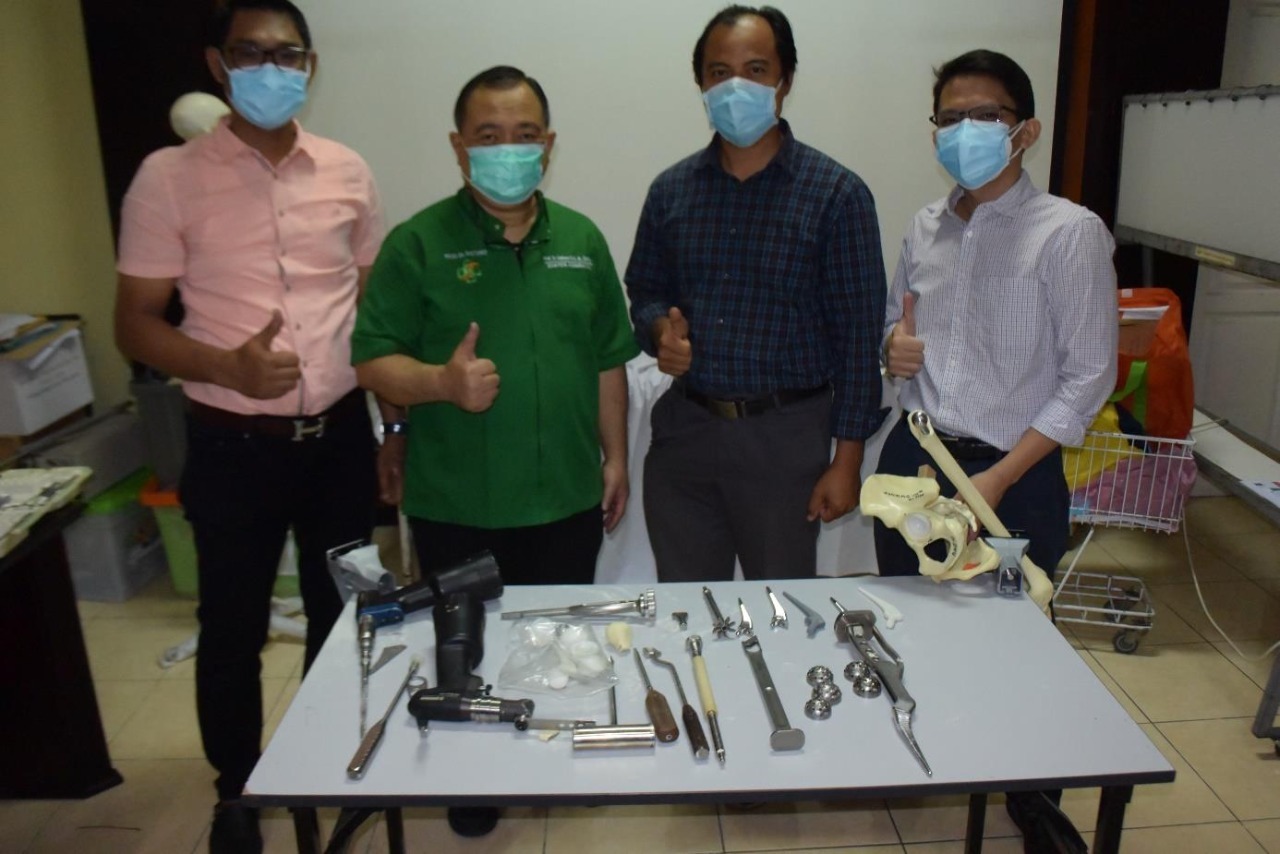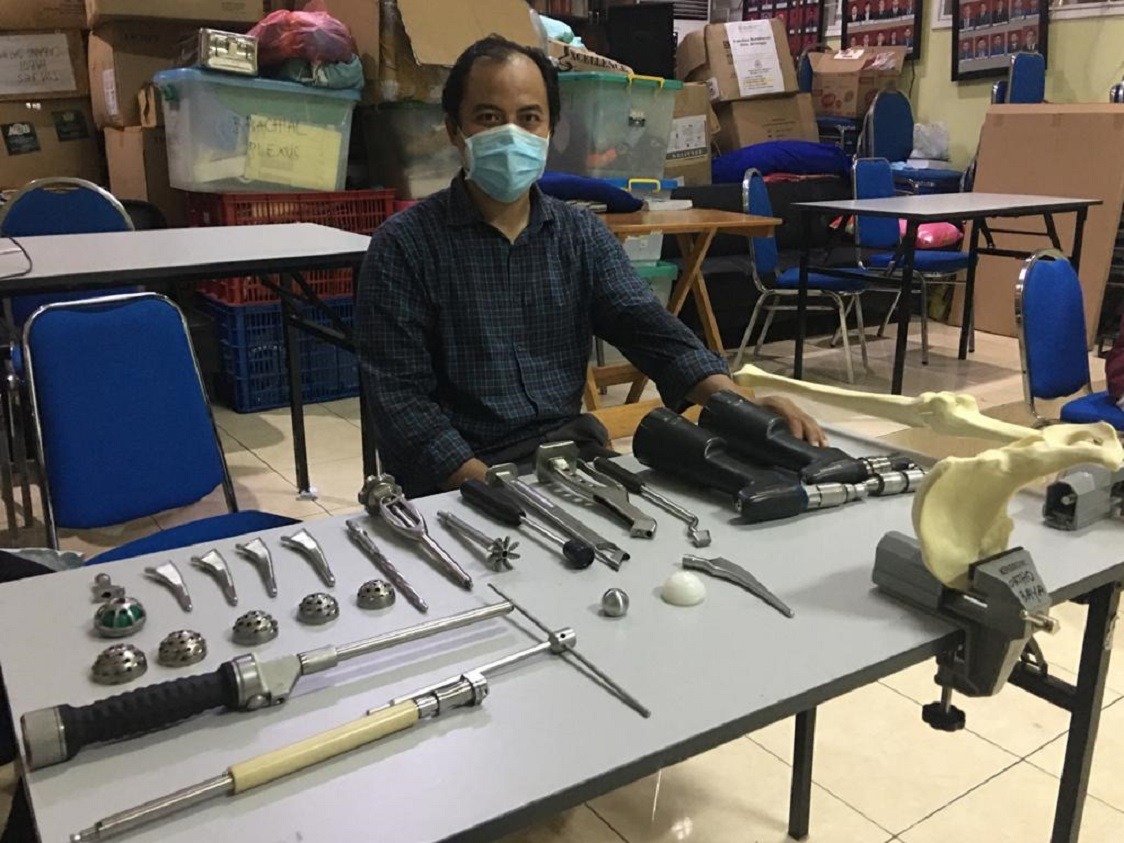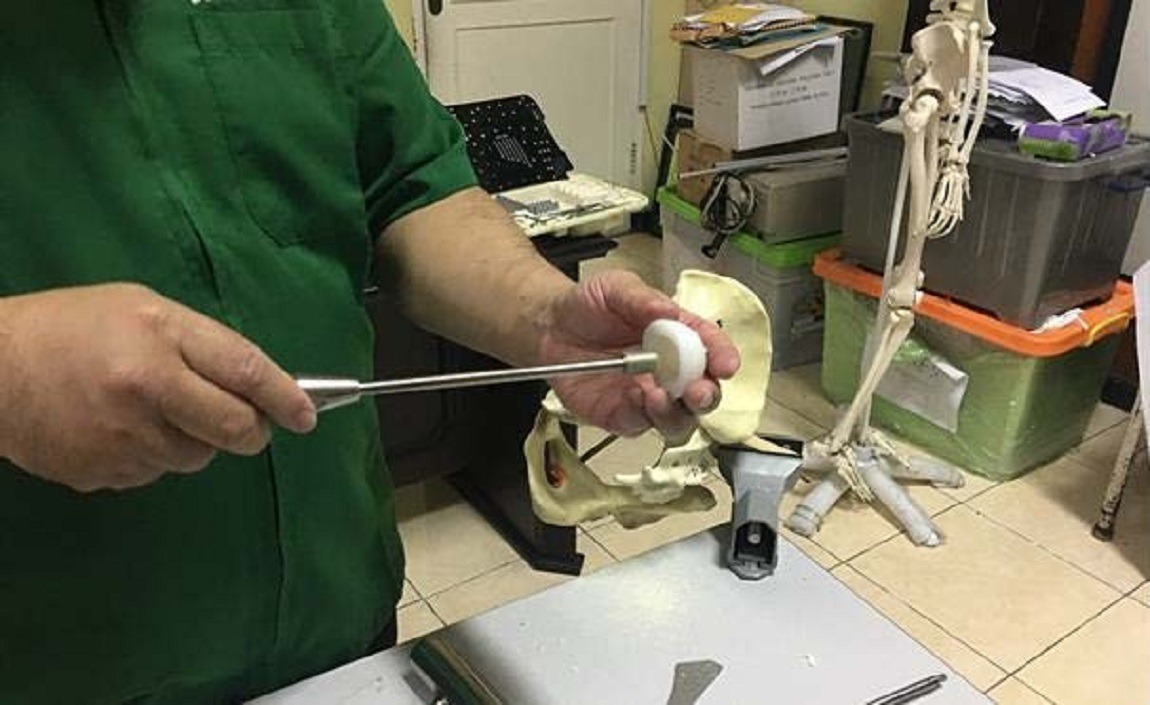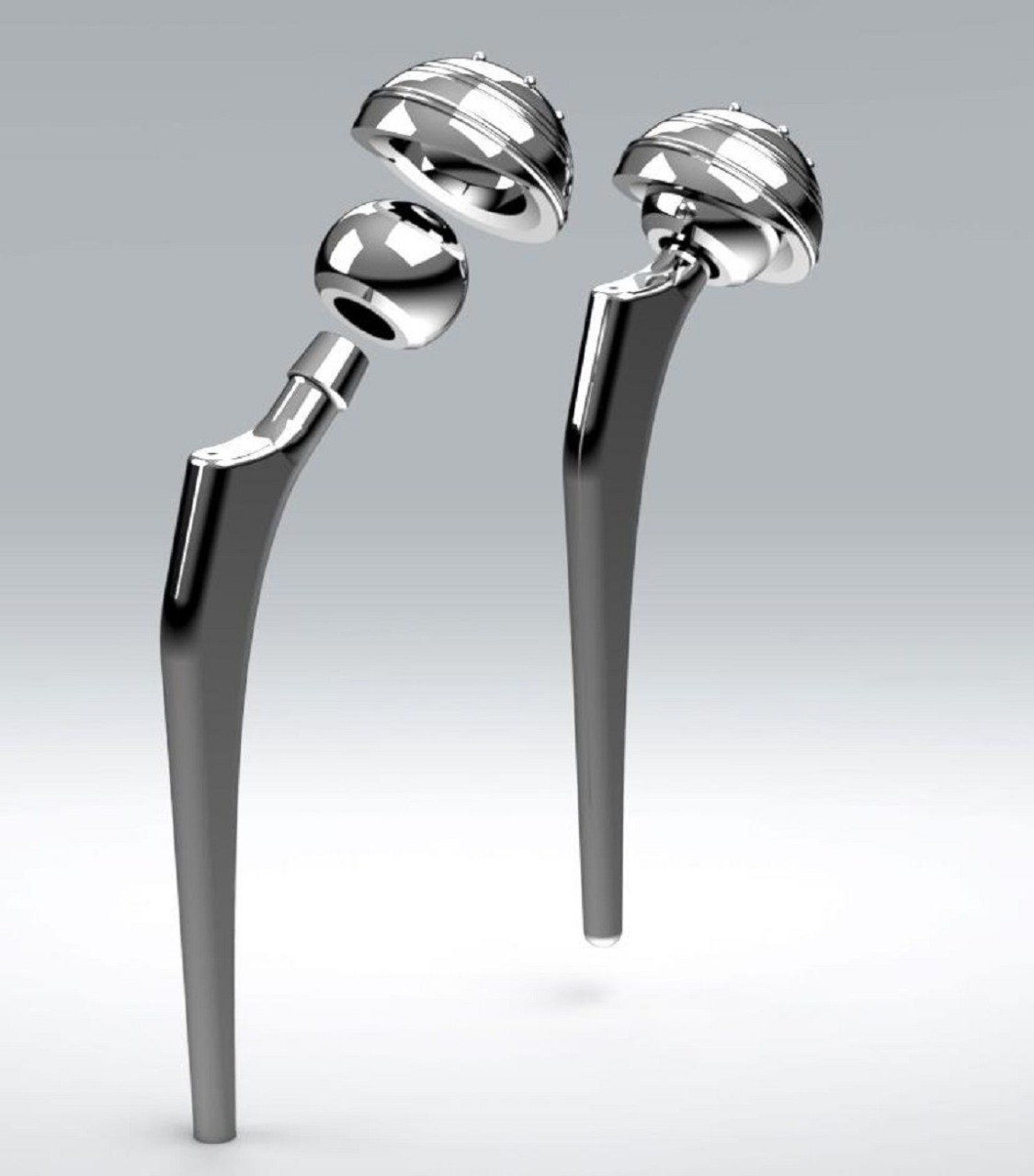ITS Lecturer Creates Indonesian Local Hip Bone Implant

Fahmi Mubarok ST MSc Ph.D. (second from right) with a team of orthopedic doctors at RSUD dr Soetomo
ITS Campus, ITS News – The academic community Institut Teknologi Sepuluh Nopember (ITS) continues innovating technology that is useful for the nation’s progress. This time, a lecturer from the ITS Mechanical Engineering Department Fahmi Mubarok ST MSc Ph.D. and the Regional General Hospital (RSUD) dr Soetomo Surabaya created a local Total Hip Arthroplasty (THA) implant that was adapted to the size of the hip bone of the Indonesian people.
THA is an operation performed to replace a damaged or problematic hip joint due to a disease such as osteoporosis with a new artificial joint through an implant. This research has been designed since 2019 and is planned to last until 2024 with the ultimate goal of commercializing the THA design, accompanied by supervision and development of the implants created.

Fahmi Mubarok ST MSc Ph.D. during the trial process of installing a total hip arthroplasty (THA) implant in the laboratory
This local THA model is made because all implants circulating in Indonesia are still imported from abroad. Fahmi said the size of the imported implants had not yet been adjusted to the anatomy or morphometry of the Indonesian people. “The design of the (imported) bone implant is larger because it is made based on the anatomy of the European and American population, who incidentally is of the Caucasoid race,” said Fahmi.
The 2022 European Inventor Awards’ finalist said that Indonesia’s most widely used femoral size has a length ranging from 115-160 centimeters. Then, the size of the femoral head offset of Indonesians is 35 millimeters shorter than Swiss or French people (47 millimeters) and India or Pakistan (40 millimeters). However, the femoral head is still made in international sizes, with a diameter of 22 to 44 millimeters.
The alumnus of Norwegian University of Science and Technology then mentioned several manufacturers of THA implants widely used in Indonesia, namely DePuy Synthes from the United States, Medacta International SA from Switzerland, and Implantcast GmbH from Germany. “The ITS team implant adopted a system with orthopedic fittings belonging to DePuy Synthes, so the DePuy Synthes design became the foundation in the implant design process,” said the 44-year-old man.

The process of installing a prototype bone implant on bone made by ITS lecturer Fahmi Mubarok ST MSc Ph.D. with the DePuy Synthes system
The reason for using existing or existing designs in local implant design is that implants are implanted using assistive devices. Meanwhile, implant installation aids have specific accuracy to the shape of the implant, so design changes are still not possible due to the installation machine’s availability.
Fahmi detailed the research stages starting from the implant design process. In this case, data on the hip bones were obtained from the results of magnetic resonance imaging (MRI) of RSUD dr Soetomo. “In the future, we also hope to be able to develop our own specially designed implants, but for now, we are just creating the implants,” said Fahmi.
After the design, the finished bone implant design is printed through 3D printing for the trial phase. Testing of product samples was carried out on synthetic bone made of polymer. Fahmi said that he submitted this process to the Orthopedic Department of RSUD, Dr. Soetomo, represented by Prof. Dr. Dwikora Novembri Utomo SpOt(K) and Dr. Kukuh Dwiputra Hernugrahanto SpOt(K).

Total hip arthroplasty (THA) design created by ITS lecturer Fahmi Mubarok ST MSc Ph.D. as a whole with and without collar
The results of the implant design test are under review by an orthopedic specialist, the Associate Professor at the ITS Mechanical Engineering Department explained that it is necessary to iterate and experiment several times until the design is approved. “After being tested on synthetic bone and cadaver, we are targeting preclinical trials on sheep in 2023 and clinical trials in 2024,” he said.
The main obstacle that Fahmi faced was adjusting the research time to the busy orthopedic doctors at dr Soetomo Hospital, who had a busy operating schedule. However, Fahmi used this momentum to analyze the bone surgery procedure. In addition, support from the market is also needed because local implants made by Fahmi have to compete with imported implants that have been circulating for a long time.
In the future, Fahmi hopes that this research will be one step in meeting the need for permanent implants in Indonesia and proving that Indonesia can produce its implants. “Be open and collaborate with doctor colleagues because they are the ones who will apply this discovery and help meet Indonesia’s target of providing local implants,” concluded Fahmi.
(AJ/ITS Public Relations)
Reporter: Yanwa Evia Java
Related News
-
ITS Collaboration with BPBD East Java, Launching VR Disaster Simulation
ITS Campus, ITS News — Supporting anticipation of disasters and continuing to educate the public, Institut Teknologi Sepuluh Nopember
August 03, 2022 19:08 -
Supporting the Implementation of Innovative Ideas, ITS and IYSA Hold International Competition
ITS Campus, ITS News — Institut Teknologi Sepuluh Nopember (ITS) has once again proven its commitment to supporting the
August 03, 2022 19:08 -
ITS Maintains Informative Qualification for Five Consecutive Years at KIP Awards
ITS Campus, ITS News — Institut Teknologi Sepuluh Nopember (ITS) has once again successfully maintained its Informative Qualification predicate
August 03, 2022 19:08 -
ITS Strengthens Smart Eco-Campus through UI GreenMetric 2024
ITS Campus, ITS News — Institut Teknologi Sepuluh Nopember (ITS) has once again demonstrated its commitment to environmental concern
August 03, 2022 19:08
